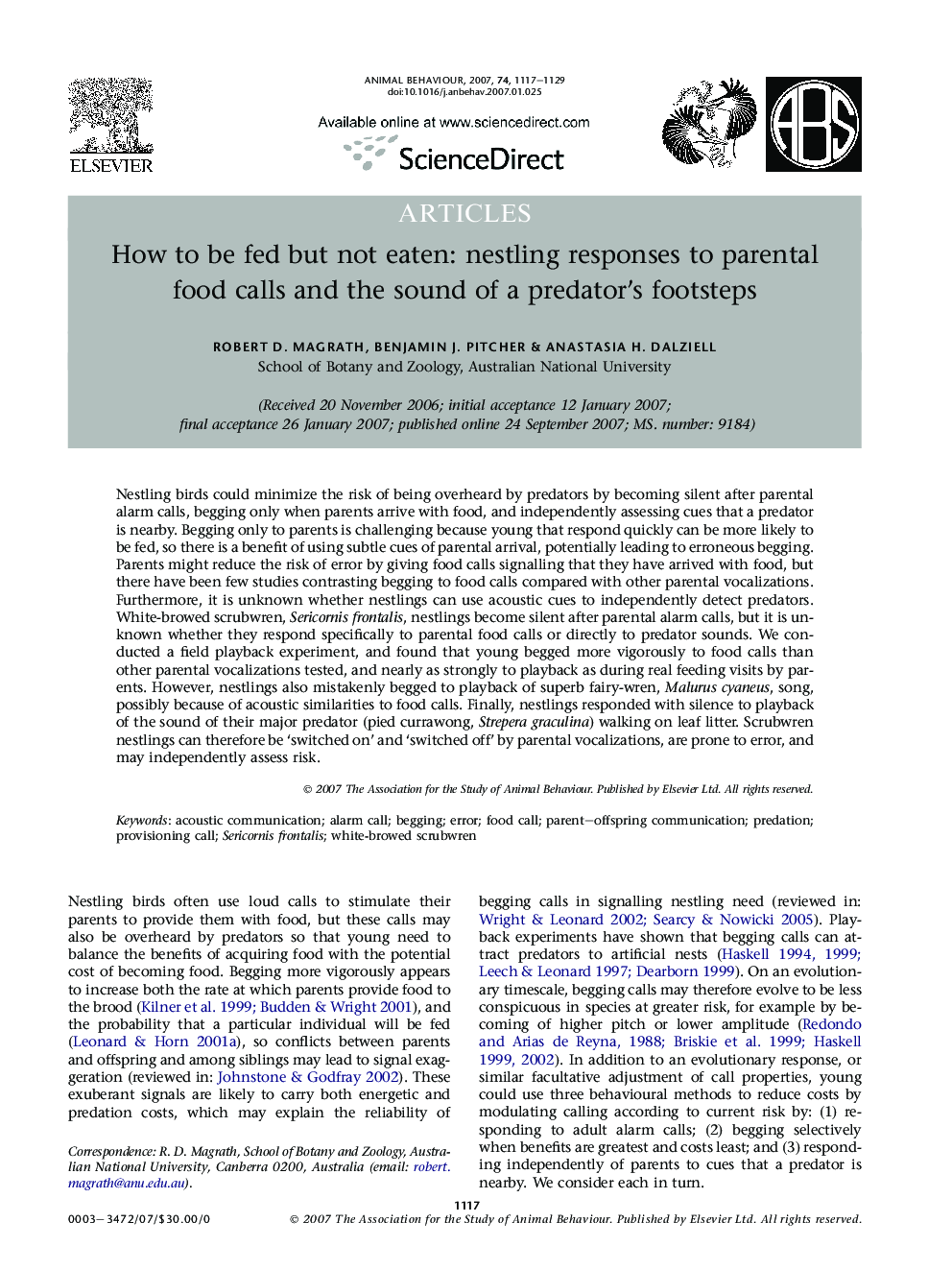| کد مقاله | کد نشریه | سال انتشار | مقاله انگلیسی | نسخه تمام متن |
|---|---|---|---|---|
| 2418265 | 1104342 | 2007 | 13 صفحه PDF | دانلود رایگان |

Nestling birds could minimize the risk of being overheard by predators by becoming silent after parental alarm calls, begging only when parents arrive with food, and independently assessing cues that a predator is nearby. Begging only to parents is challenging because young that respond quickly can be more likely to be fed, so there is a benefit of using subtle cues of parental arrival, potentially leading to erroneous begging. Parents might reduce the risk of error by giving food calls signalling that they have arrived with food, but there have been few studies contrasting begging to food calls compared with other parental vocalizations. Furthermore, it is unknown whether nestlings can use acoustic cues to independently detect predators. White-browed scrubwren, Sericornis frontalis, nestlings become silent after parental alarm calls, but it is unknown whether they respond specifically to parental food calls or directly to predator sounds. We conducted a field playback experiment, and found that young begged more vigorously to food calls than other parental vocalizations tested, and nearly as strongly to playback as during real feeding visits by parents. However, nestlings also mistakenly begged to playback of superb fairy-wren, Malurus cyaneus, song, possibly because of acoustic similarities to food calls. Finally, nestlings responded with silence to playback of the sound of their major predator (pied currawong, Strepera graculina) walking on leaf litter. Scrubwren nestlings can therefore be ‘switched on’ and ‘switched off’ by parental vocalizations, are prone to error, and may independently assess risk.
Journal: Animal Behaviour - Volume 74, Issue 5, November 2007, Pages 1117–1129